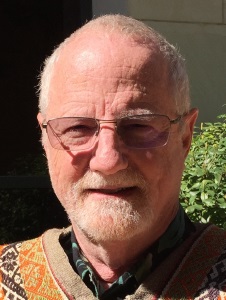
Meeting Abstract
BERN-1 Friday, Jan. 6 19:00 – 20:00 We have soiled our next: Now what? CREWS, David; University of Texas at Austin crews@mail.utexas.edu http://www.utexas.edu/research/crewslab
Our environment is now permanently contaminated. Beginning with the Industrial Revolution to the more recent Chemical Revolution, the confluence of environmental stressors has reached a point of no return. For example, endocrine disrupting chemicals (EDCs) continue to be produced and many persist in the environment. Even chemicals no longer in production (an example are polychlorinated biphenyls (PCBs), banned in the USA, Canada and Europe for decades) continue to be detectable in body tissues of virtually all wildlife (including humans). With climate change and the melting of polar ice caps, more PCBs are liberated into the environment such that the global burden is actually increasing in parts of the world. Organisms are exposed to mixtures of chemicals, often unique to particular geographies, and little is known about these effects at the level of individuals, even though population level effects are obvious. In environmental toxicology a guiding principle is that for every chemical there is a threshold level, below which there is no response. There is now clear evidence that for at least three EDCs there is no threshold. Because transitions between critical life stages (e.g., conception, birth, and adolescence) are modulated by a delicate balance of naturally occurring hormones, any EDC contamination changes endocrine signalling systems with severe consequences. We know that individuals with high body burdens of EDCs have compromised immune systems. But focusing only on EDCs is overly narrow. Organisms living around human habitation must also contend with light when it should be dark, Increasing global temperatures impose challenges to thermal adaptations (via Q10 principles). Air pollution, hypoxic aquatic conditions, and open pit mining for metals and minerals are just a few of the other permanent changes in our ecosystems. Taken together anthropogenic changes to the environment represent a rapidly accelerating evolutionary force with unpredictable outcomes.
Biography:  David Crews is the Ashbel-Smith Professor in Zoology and Psychology in the Department of Integrative Biology at the University of Texas at Austin. His research focuses on how the sexes are determined and differentiate. This research uncovered the mechanisms and outcomes of sex determination in vertebrates lacking sex chromosomes, showed how the hormone-behavior interactions evolve, and provided a deeper understanding of how the environment and behavior influence the structure and function of the brain. His work in the area of environmental contamination, particularly endocrine disrupting chemicals (EDCs), initially in wildlife and later in conventional animal models, has illustrated three principal points: (1) The assumption that for all chemicals there exists a threshold below which there is no adverse affect does not apply to EDCs as they share a common mechanism of action of naturally occurring hormones critical to development and function; (2) Except in very rare instances environmental contamination consists of chemical mixtures, the elements of which interact in a complex manner different from that of each constituent chemical alone; (3) EDCs are driving evolutionary change in organisms, including humans. In addition, he has been a pioneer in the now vibrant field of behavioral epigenetics, particularly in the arena of transgenerational inheritance. He has published over 400 scientific articles and has received numerous awards in his career, most recently the Howard Bern Award from the Society for Integrative and Comparative Biology, the D.O. Hebb Distinguished Scientific Contribution Award from the American Psychological Association, the Exemplar Award for the Integrative Study of Animal Behavior, and the Daniel S. Lehrman Lifetime Achievement Award from the Society for Behavioral Neuroendocrinology. He is a Fellow of the American Academy of Arts and Sciences, the American Psychological Society, and the American Psychological Association.
David Crews is the Ashbel-Smith Professor in Zoology and Psychology in the Department of Integrative Biology at the University of Texas at Austin. His research focuses on how the sexes are determined and differentiate. This research uncovered the mechanisms and outcomes of sex determination in vertebrates lacking sex chromosomes, showed how the hormone-behavior interactions evolve, and provided a deeper understanding of how the environment and behavior influence the structure and function of the brain. His work in the area of environmental contamination, particularly endocrine disrupting chemicals (EDCs), initially in wildlife and later in conventional animal models, has illustrated three principal points: (1) The assumption that for all chemicals there exists a threshold below which there is no adverse affect does not apply to EDCs as they share a common mechanism of action of naturally occurring hormones critical to development and function; (2) Except in very rare instances environmental contamination consists of chemical mixtures, the elements of which interact in a complex manner different from that of each constituent chemical alone; (3) EDCs are driving evolutionary change in organisms, including humans. In addition, he has been a pioneer in the now vibrant field of behavioral epigenetics, particularly in the arena of transgenerational inheritance. He has published over 400 scientific articles and has received numerous awards in his career, most recently the Howard Bern Award from the Society for Integrative and Comparative Biology, the D.O. Hebb Distinguished Scientific Contribution Award from the American Psychological Association, the Exemplar Award for the Integrative Study of Animal Behavior, and the Daniel S. Lehrman Lifetime Achievement Award from the Society for Behavioral Neuroendocrinology. He is a Fellow of the American Academy of Arts and Sciences, the American Psychological Society, and the American Psychological Association.

